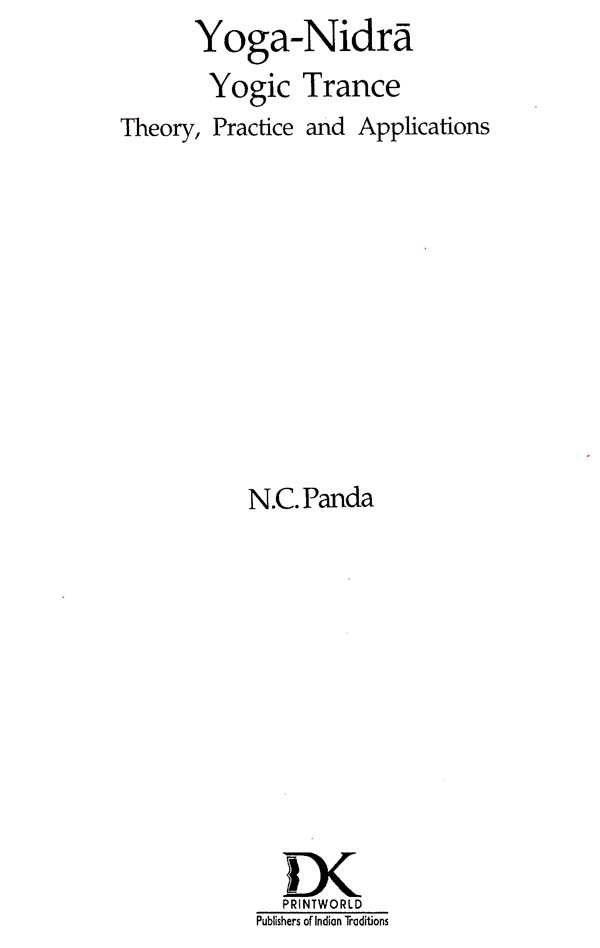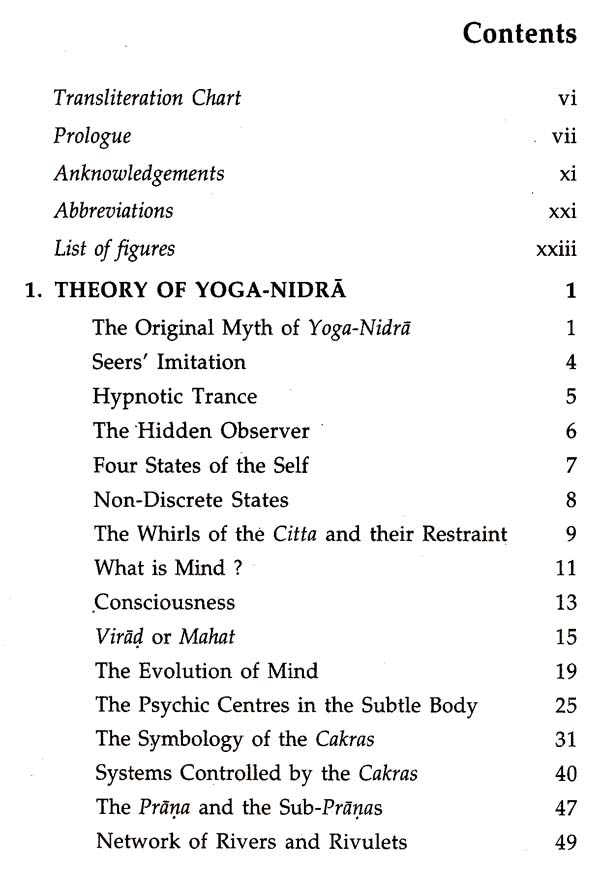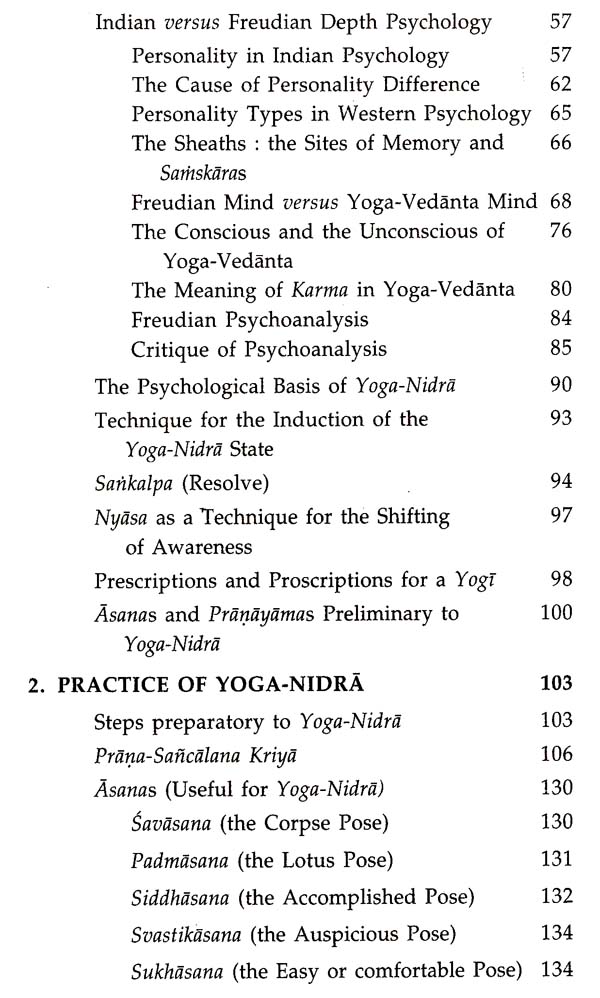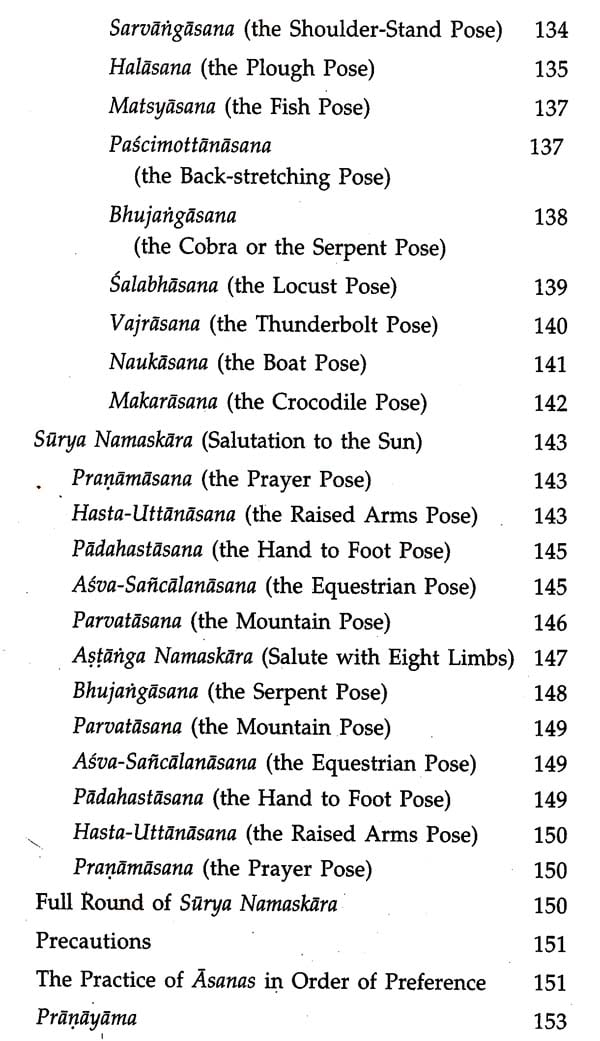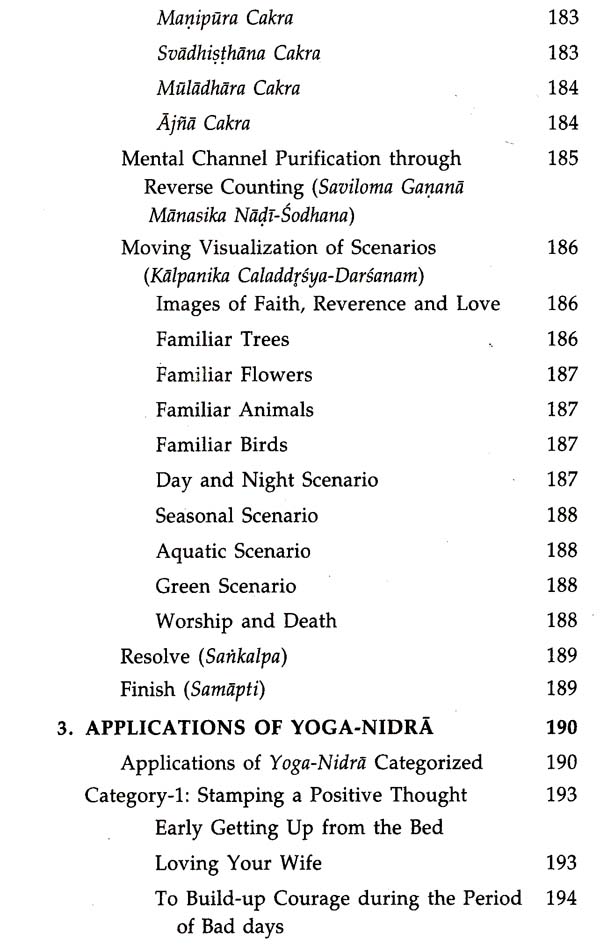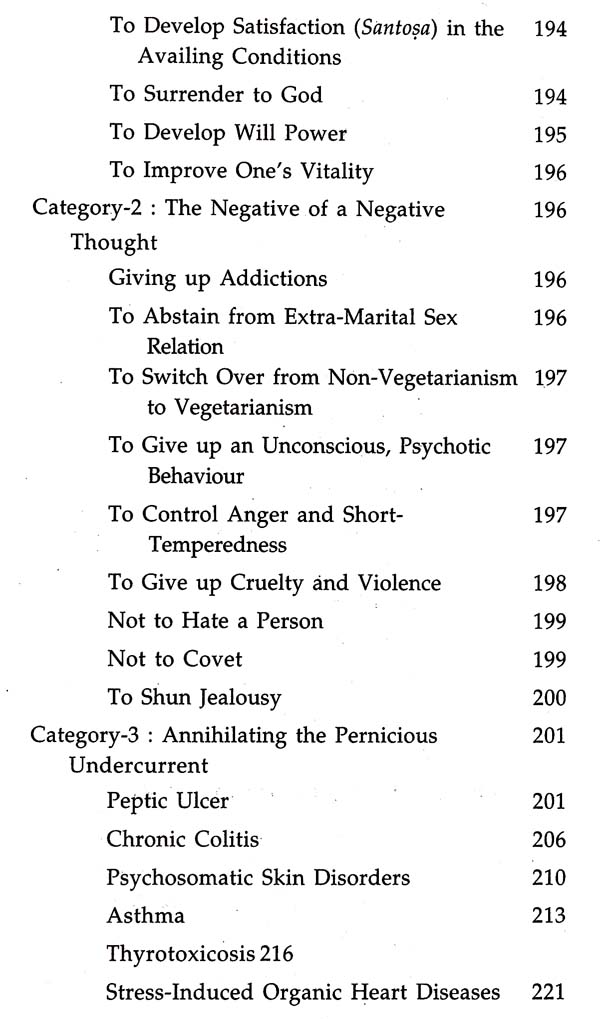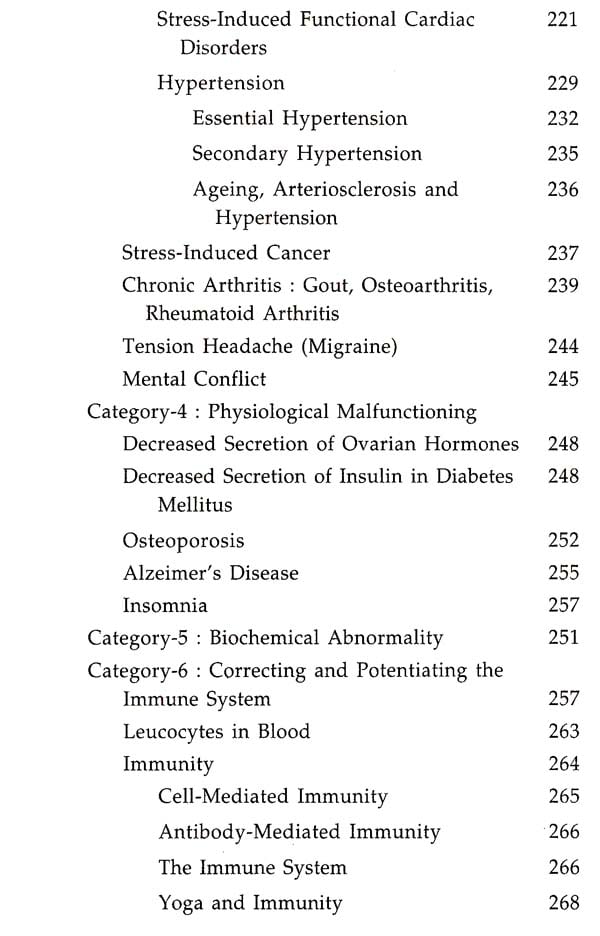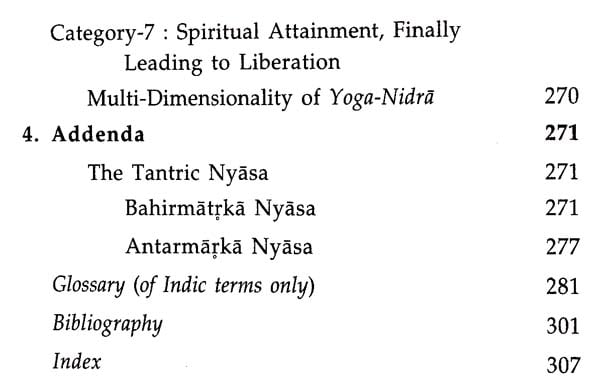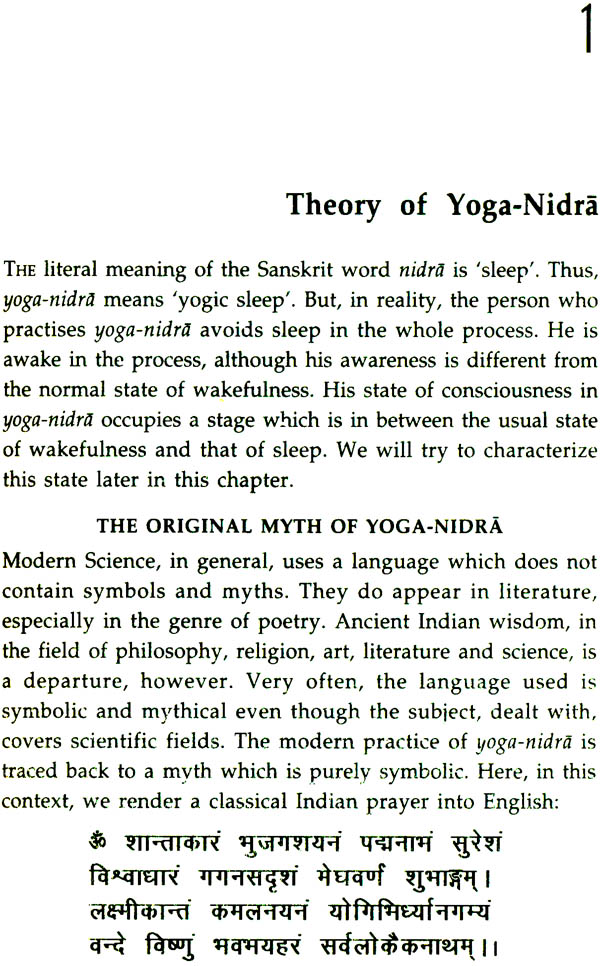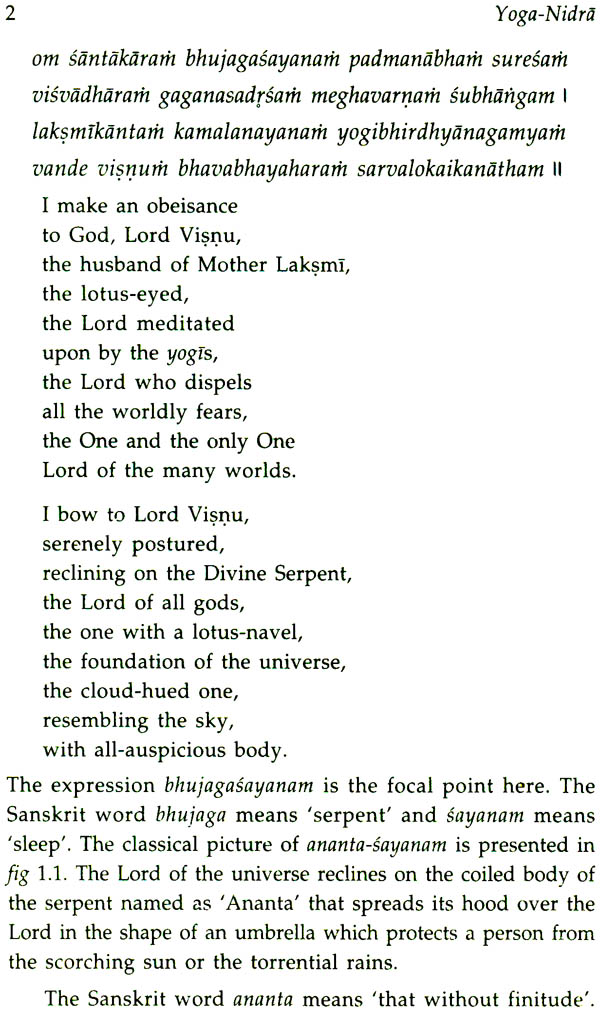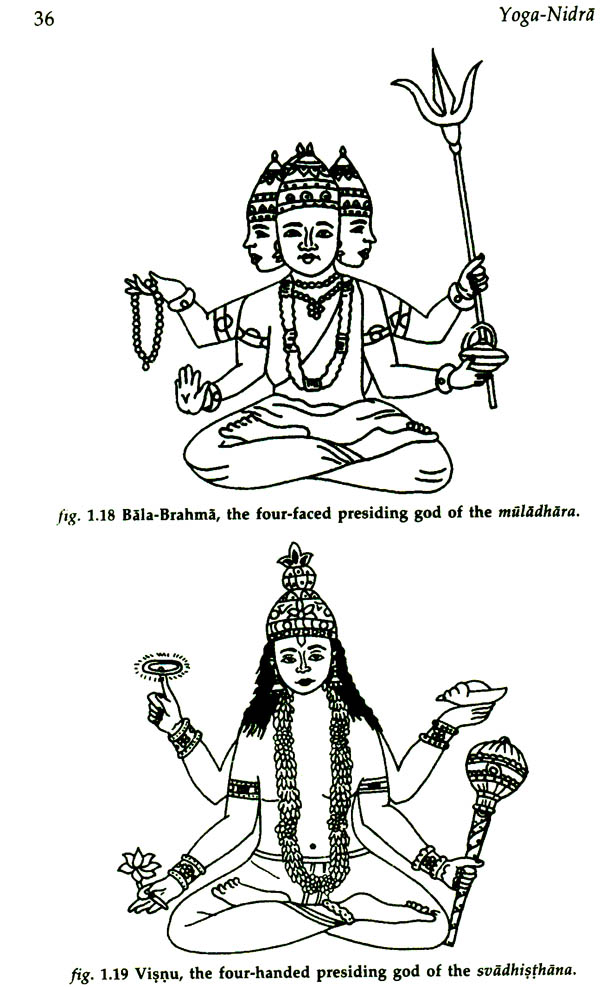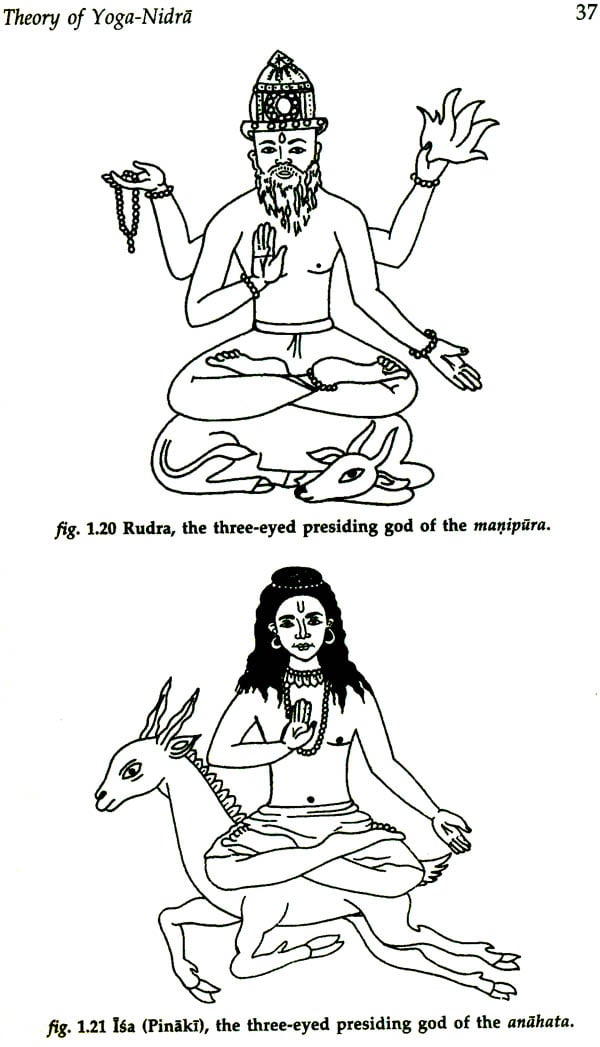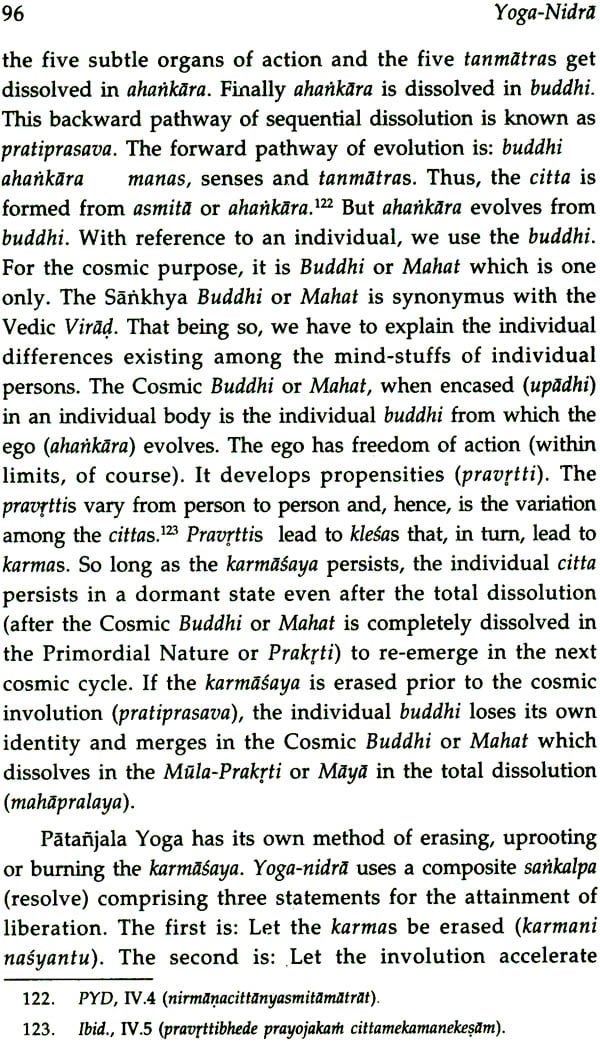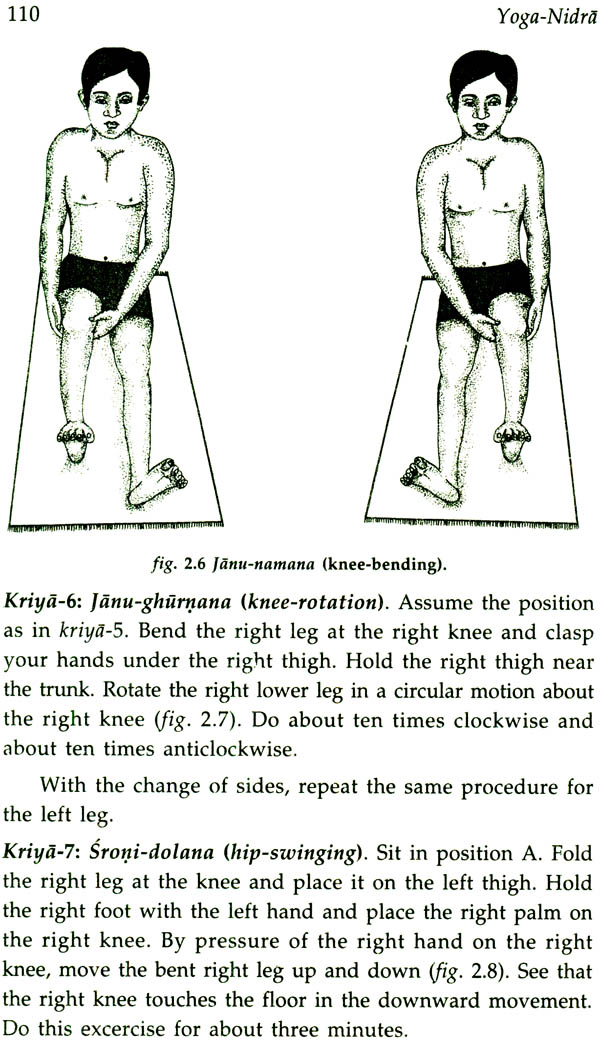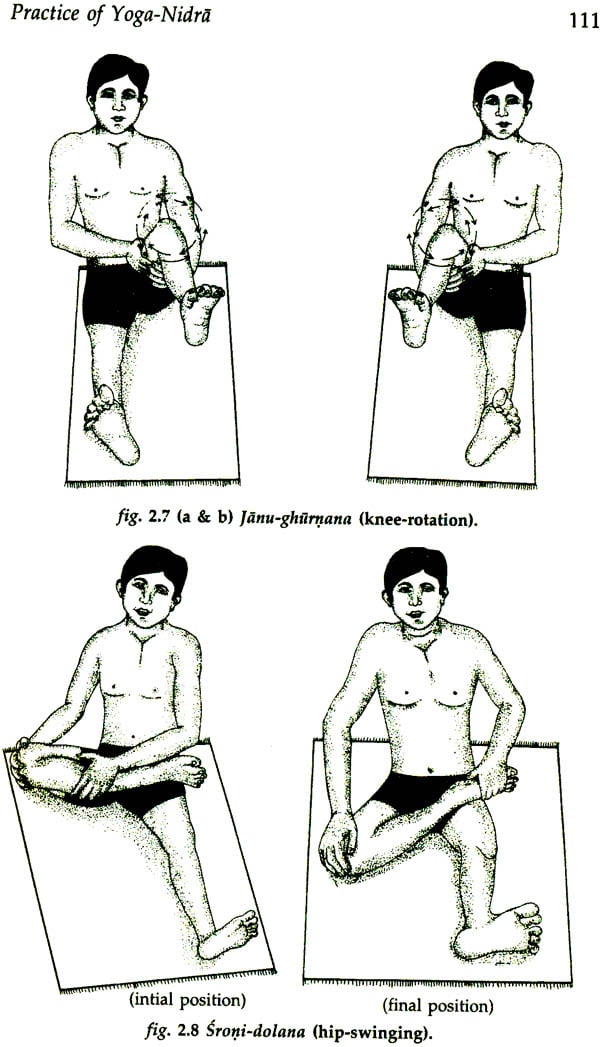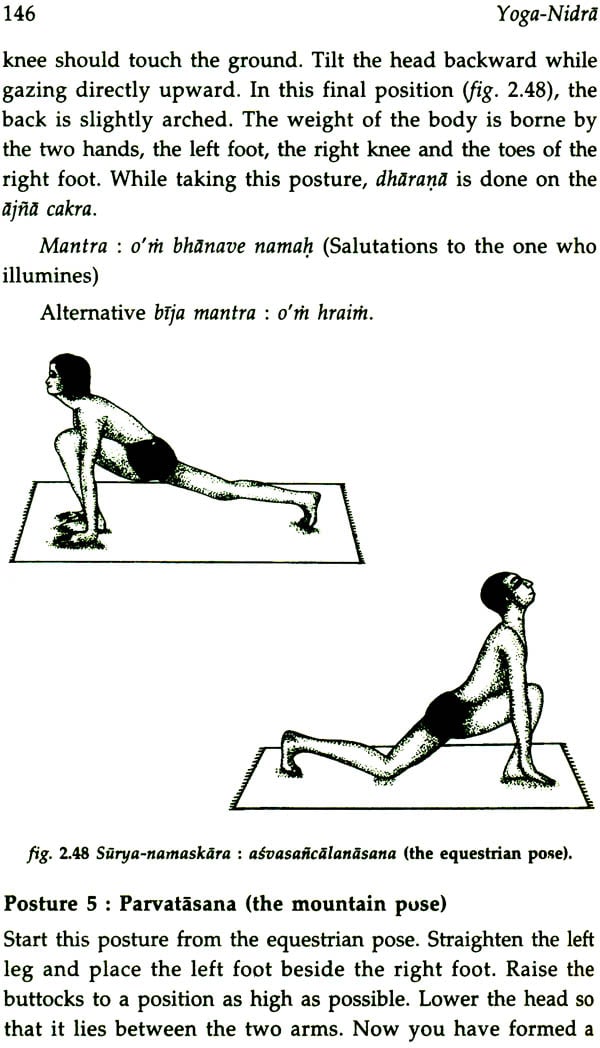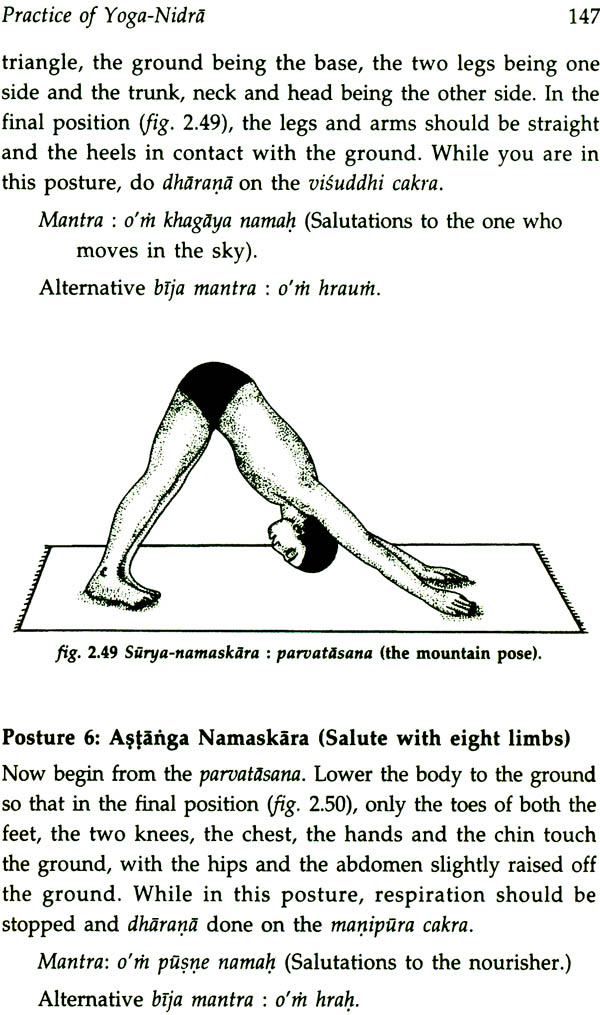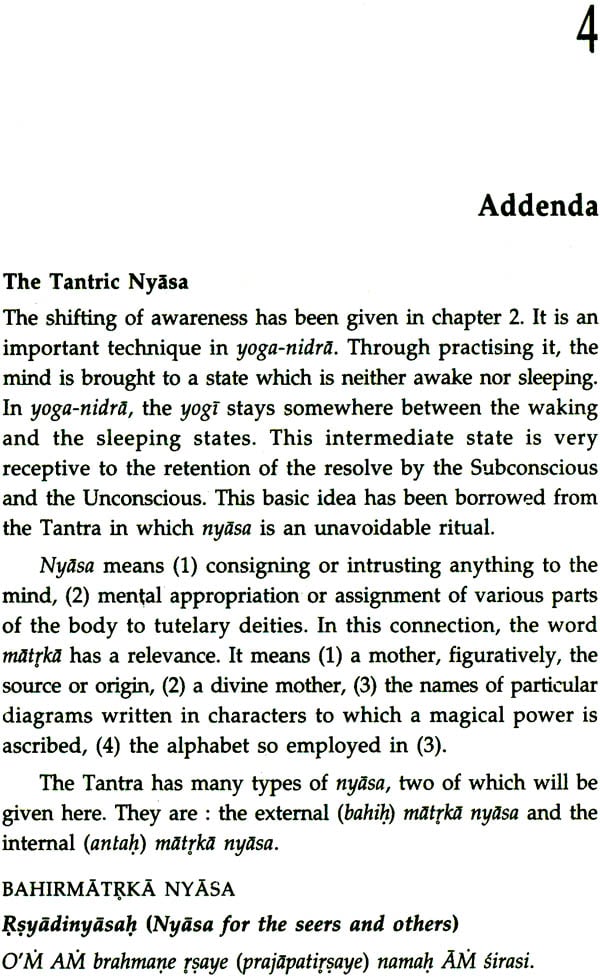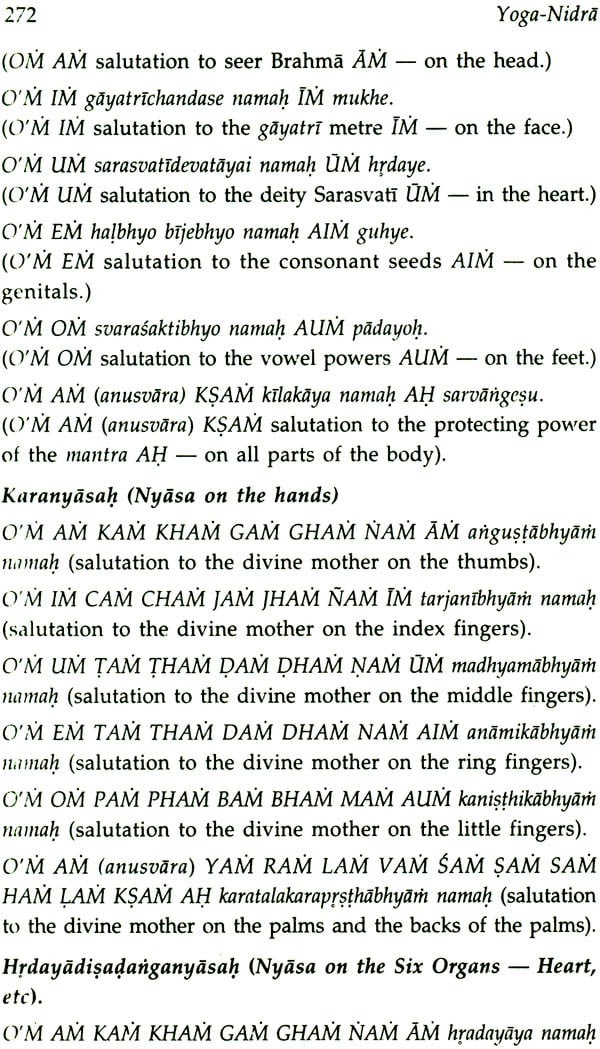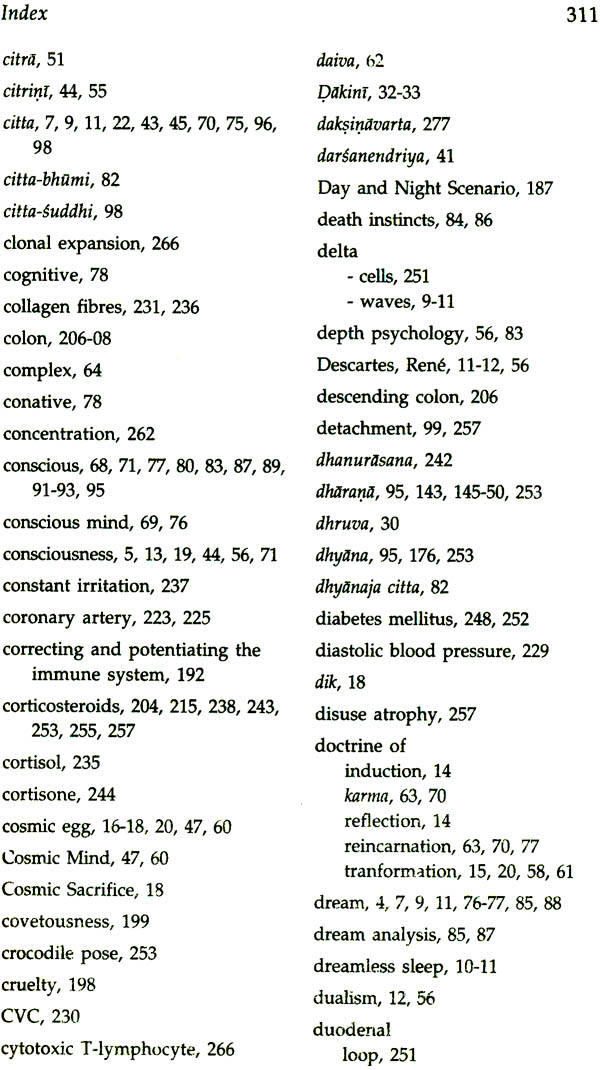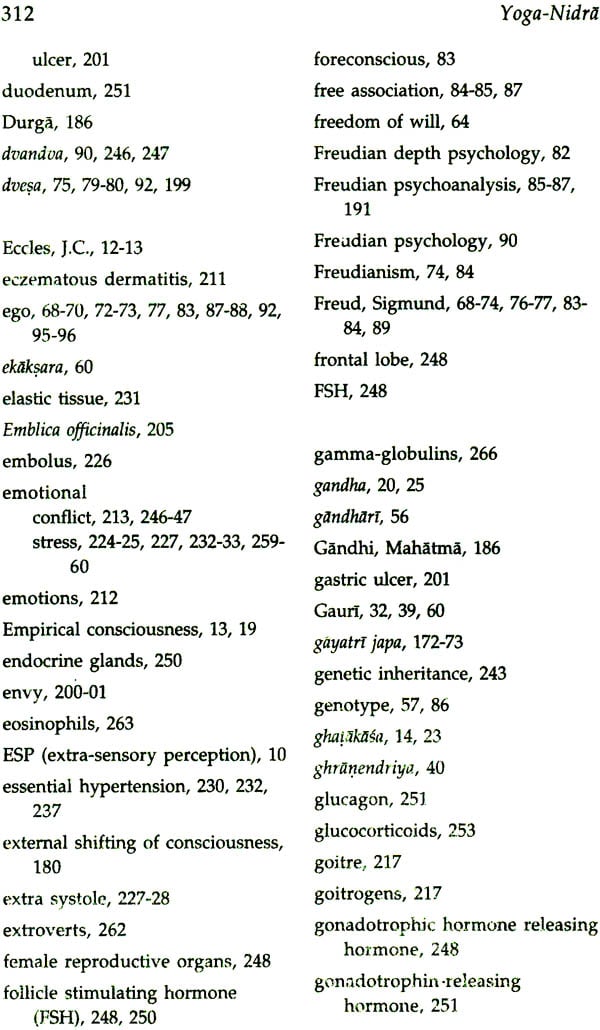
Yoga-Nidra (Yogic Trance Theory, Practice and Applications)
Book Specification
| Item Code: | NAV946 |
| Author: | N.C Panda |
| Publisher: | D. K. Printworld Pvt. Ltd. |
| Language: | English |
| Edition: | 2022 |
| ISBN: | 9788124602423 |
| Pages: | 325 (B & W Figures: 116) |
| Cover: | HARDCOVER |
| Other Details | 9.00 X 6.00 inch |
| Weight | 600 gm |
Book Description
A number of diseases are psychosomatic. They are rooted in the psyche (mind), but they blossom and bear fruits in the physique (body). Medical and surgical treatments of psychosomatic diseases do help the patients, but cannot uproot the original cause. Psychoanalysis and psychotherapy sometimes alleviate the symptoms, but not always. Psychoanalysis has its own limitations. The subjectivity of the analyst, the patient's cooperation and his limitations are some of the factors that act as constraints. Moreover, psychotherapy involves a psychology-specialist who is to diagnose the disease and treat the patient. On the other hand, yoga-nidra is a self-therapy and its does not involve analysis.
There are many diseases which are due to physiological malfunction or dysfunction. Some are due to biochemical malfunction or dysfunction. Both the physiological and biochemical abnormalities can be corrected by resolves in yoganidra. The resolve is retained by the deeper strata of the mind which, in turn, influences the appropriate portion of the brain that directs the relevant organ neurally through transmission of nerve-impulses ad hormonally through the pituitary gland which influences the other endocrine glands.
A number of diseases are primarily caused by mental trauma and anxiety. Some of them are very serious and sometimes even fatal. Cardiac diseases and cancer are examples of this category. Yoga-nidra may be practiced to reduce or to get rid of tension and prevent and cure diseases caused by tension.
Yoga-nidra is a potent tool to fortify the immune system of the body. Thereby many diseases can be prevented and cured.
In addition to the prevention and treatment of diseases, yoga-nidra can be used to improve one's personality, to regulate one's habits and life-patterns, to get rid of some unwanted indulgence and addictions and to improve the quality of life.
Yoga-nidra can be used for spiritual uplift too. Spiritual uplift can be graded and gradual, leading finally to liberation (moksa).
In this book, hypnosis and yoga-nidra have been compared and contrasted. The resolve (sankalpa) is a suggestion and auto-suggestion. If considered on this point, both have a commonality. Except this, the two are different. The hypnotic state is an altered state of consciousness whereas the yoganidra state is intermediate between the conscious state and the sleeping state. Hypnotic auto-suggestion being excluded, hypnosis involves a hypnotist who directs the subject. On the other hand, the resolve in yoga-nidra is an auto-suggestion and auto-therapy which does not involve a second person. In the yoga-nidra concept, the yogi induces a receptive state (half awake and half asleep, but still conscious) in which the Subconscious and the Unconscious receive and record the resolve for future action. They later influence the relevant organ through the brain favourably. They also influence the conscious mind.
The Indian concept of the separateness of the brain and the mind and the concept of the brain being the apparatus of the mind have been emphasized in this book. Freudian depth psychology and Indian depth psychology have been compared and contrasted. This is the first book of its kind to present a critical analysis of Freudian depth psychology and to elaborate the tenets of Indian depth psychology. This is also the first book to explain the benefits of yoga-nidra in the context of Indian depth psychology and in the modern format of medical physiology, biochemistry and pathology.
Swami Satyananda Sarasvati of the Bihar School of Yoga has popularized yoga-nidra. He and his associates have written some books on this topic. The present book is not a duplicate of what they have written. Academic depth psychology is elaborately treated in this book. The applications of yoga-nidra, with special reference to medical science, have been scientifically presented. Furthermore, the techniques of yoga-nidra have been well systematized and standardized. For the first time, yoga-nidra has been assigned a scientific status in this book.
This book comprises four chapters. The first chapter presents a theoretical background of yoga-nidra and a theoretical background of Indian depth psychology vis-à-vis Freudian depth psychology. The Indian concept of mind has been presented lucidly for the first time. The second chapter gives the techniques of yoga-nidra in a lucid, simplified manner. The third chapter deals with the applications of yoga-nidra. Some of the applications, with special reference to diseases, have been somewhat technical. The discussions relate to medical science. Practising doctors, throughout the world, would perhaps consider the topic unbiasedly and objectively. It is expected that this book would serve as a standard reference work for the use of yoga-nidra in medical practice.
The fourth chapter of this book is an addenda. A typical system of Tantric nyasa has been given here. It would not be possible to induce the yoga-nidra state without doing nyasa. Hence it has a tremendous significance in the total process of yoga-nidra.
Modern age, with technological civilization, over-ambition, rat-race for competition and alienation, is overburdened with tension, anxiety and frustration. It is hoped that the modern man would benefit much by practicing yoga-nidra. And this is expected to serve as a useful handbook.
It is a multi-disciplinary book dealing with Yoga, Tantra psychology and medical science. The attempt of the writer is introductory. If the introduction serves as a catalyst to accelerate further generation of higher thought, it would benefit humankind for the attainment of physical, mental and spiritual health.
The book presents yoga-nidra as a scientific discipline that is a potent means to strengthen the body's immune system and thus to prevent and cure diseases and to regulate one's life patterns. It examines in detail the theory of yoga-nidra, going into the Indian concept of mid and personality. It establishes the psychological basis of yoga-nidra by comparing hypnotic trace and yogic trance and Freudian and Yoga-Vedanta psychologies. It presents the techniques of yoga-nidra and deals with the applications of yoga-nidra with relation to curing of psychosomatic and other diseases of common occurrence and to solving current problem such as drug addiction and stress-induced maladies.
This well-conceived and through research work will useful to scholars of ancient Indian medical science and psychology, particularly those concerned with study of yoga vis-à-vis modern medical problem and systems. It will be of equal importance for the general readers owing to its interesting subject matter.
**Contents and Sample Pages**
